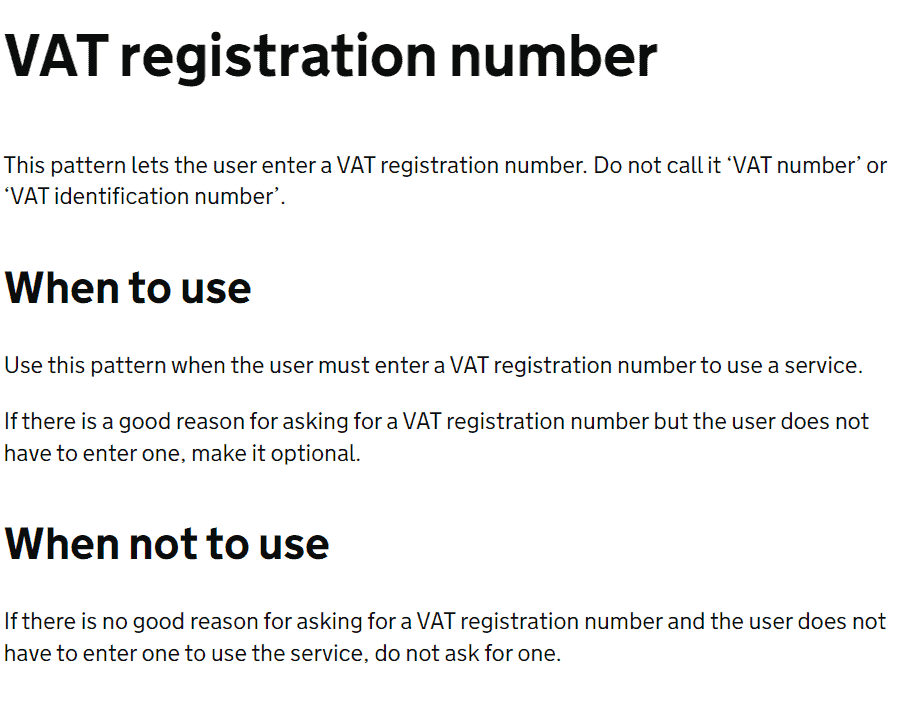Wondering what VAT number is or how to get one. This guide will tell you everything you need to know.
What is a UK VAT Number?

Value Added Tax (VAT) is a familiar concept to many of us, representing a consumption tax charged on a wide range of goods and services.
In the United Kingdom, VAT is managed independently by HM Revenue & Customs (HMRC). When businesses register for VAT, HMRC assigns them a unique identification number commonly known as a VAT registration number or a VRN.
This number allows authorities to easily identify a business for VAT benefits and obligations. If a business’s activities require them to pay VAT, they will need to register with HMRC to get a VAT number (more on this later).
For businesses located in England, Scotland, and Wales, the VAT number format includes the letters “GB” followed by nine numbers. Businesses in Northern Ireland trading in the EU will have the letters “IX” instead of “GB”.
When to Register for a VAT Number
Determining whether you need a VAT registration number is an important step before proceeding with any VAT application. The requirements will vary based on your business location and revenue.
For UK-based companies, the current threshold to register for VAT is £85,000. This means you must register if your VAT-taxable turnover exceeds £85,000 within a 12-month period or if you anticipate exceeding this threshold within the next 30 days.
If your business does not reach this threshold, you are not obliged to get a UK VAT registration number. Although, voluntary registration is still an option that can provide certain advantages.
For instance, you’ll be able to reclaim the tax on business expenses. It also helps facilitate transactions with other VAT-registered businesses.
If your business is located outside the UK, there is no specific threshold. Instead, you must register for UK VAT as soon as you supply goods and services to the UK, or if you expect to do so within the next 30 days.
How to Register for a VAT Number
You can choose from three different options for the VAT registration process, namely through the HMRC, an agent, or by post.
Through HMRC
The easiest way to register for VAT and get a VAT number is to apply online through HMRC’s website. You’ll need to create a VAT online account, also known as a Government Gateway Account.
Within around 30 days, you’ll receive your VAT registration certificate and number on your online account.
Through an Agent
Alternatively, you can appoint an agent or an accountant to handle the registration process, submit VAT returns, and communicate with HMRC on your behalf.
By Post
In certain cases, you may need to register by post. This applies if you’re:
- Applying for a registration exception
- Registering multiple divisions or business units under different VAT numbers
- Joining the Agricultural Flat Rate Scheme
In such cases, you’ll need to complete and submit the VAT1 form.
How to Check a VAT Number
It’s incredibly important to make sure you use the right VAT number to avoid any problems with your VAT returns in the future. To avoid issues, always double-check that the VAT number is valid and accurate whenever:
- You include your VAT number on an invoice
- Deal with clients who’ve given you their VAT numbers
- Share your VAT number with suppliers
The easiest and most trustworthy way to check a UK business’s VAT number is by visiting the official UK Government website.
VAT Obligations
Once you’ve registered for VAT, there are certain obligations you need to fulfil. These come into effect from the date of registration and include:
- Charging the correct amount of VAT on your invoices based on the applicable UK VAT rates
- Paying any VAT owed to HMRC
- Submitting VAT returns every quarter, regardless of if you have VAT to pay or reclaim
- Maintaining VAT records and a VAT account to accurately track the VAT you charge and pay
Conclusion
A VAT number is an essential requirement for businesses operating within the UK. This number enables you to charge and collect VAT on your supplies, submit VAT returns, and comply with your VAT obligations.
If you feel overwhelmed or unsure about handling these processes on your own, hiring an experienced accountant can provide you with expert guidance and support throughout the VAT registration and compliance journey.
Sources:
https://ember.co/content/article/what-is-a-vat-number
https://www.freshbooks.com/en-gb/hub/taxes/what-is-vat-number
https://eurora.com/blog/beginners-guide-how-to-get-a-uk-vat-number?